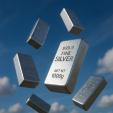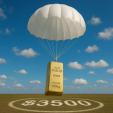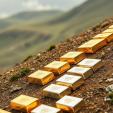Gold still has room to run as dollar weakens and inflation risks rise - Schroders
NEW YORK (August 27) Gold is once again testing critical resistance just below $3,400 an ounce and could have further to go as inflation pressures rise and investors continue to lose confidence in the U.S. dollar, according to one investment firm.
In its monthly market report, analysts at Schroders reaffirmed their bullish view on gold. The positive outlook comes as the firm turns neutral on equities, noting that investors are underpricing risks in the marketplace, “particularly on the inflation and growth fronts.”
“We maintain a positive view on gold, seeing it as a valuable diversifier in an environment of policy volatility, fiscal fragility, and growing investor uncertainty around the long-term role of U.S. government bonds and the U.S. dollar. Its role as portfolio insurance remains intact,” the analysts said. “We continue to assign a low probability to a U.S. recession in the medium term. However, with markets pricing in a near-perfect macro backdrop — characterised by resilient growth and stable inflation — we believe the environment is increasingly vulnerable to disappointments over the coming months.”
Looking specifically at gold, Jim Luke, Fund Manager, Metals at Schroders, noted in his latest report that gold’s consolidation around $3,300 an ounce has been impressive.
He explained that gold faced some difficult headwinds in the second quarter. Initially, it appeared that the economy was weathering higher tariffs and an evolving labor market due to government-imposed tighter immigration controls. However, sentiment shifted dramatically after the disappointing July employment data, which also included sharp downward revisions for May and June.
Luke said the key question now is how much “bad news” is already priced into the gold market, given that prices are up nearly 30% since the start of the year.
While investment demand in the first half of the year rose at its fastest pace since 2020, Luke added that there is still room for demand to grow in the second half.
“Aggregate quarterly investment demand is still within the post-2010 range. Part of our secular thesis is that we will see meaningful increases in investment demand to well above prior highs in aggregate tonnage terms through this cycle,” he said.
Specifically, Luke expects Western demand from North America and Europe to catch up with record investment levels in Asia.
“The contrast between East and West remains very striking. U.S. and European aggregate ETF flows have been muted compared to past cycles, with a large chunk of global ETF growth this year coming from China in April,” he said. “We are nowhere close to seeing the type of truly global bid for gold that we expect to see emerge.”
KitcoNews










